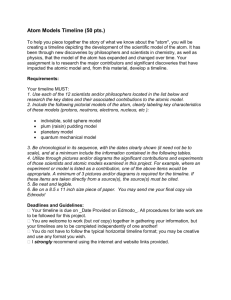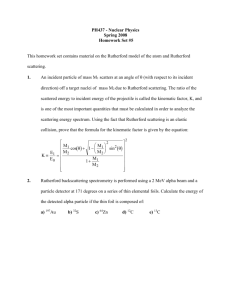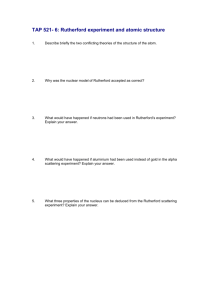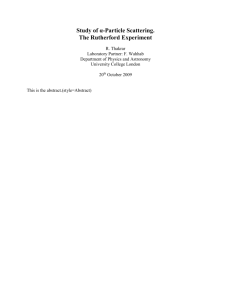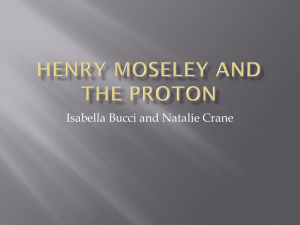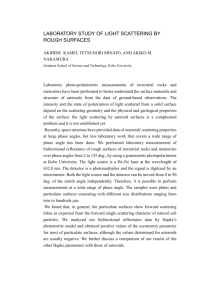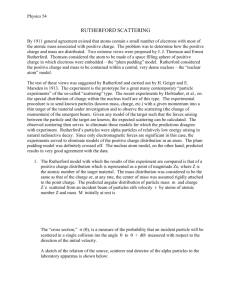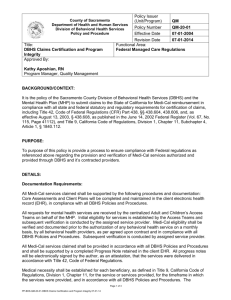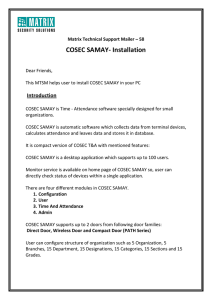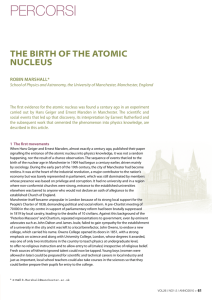TAP 521-7: Rutherford scattering data
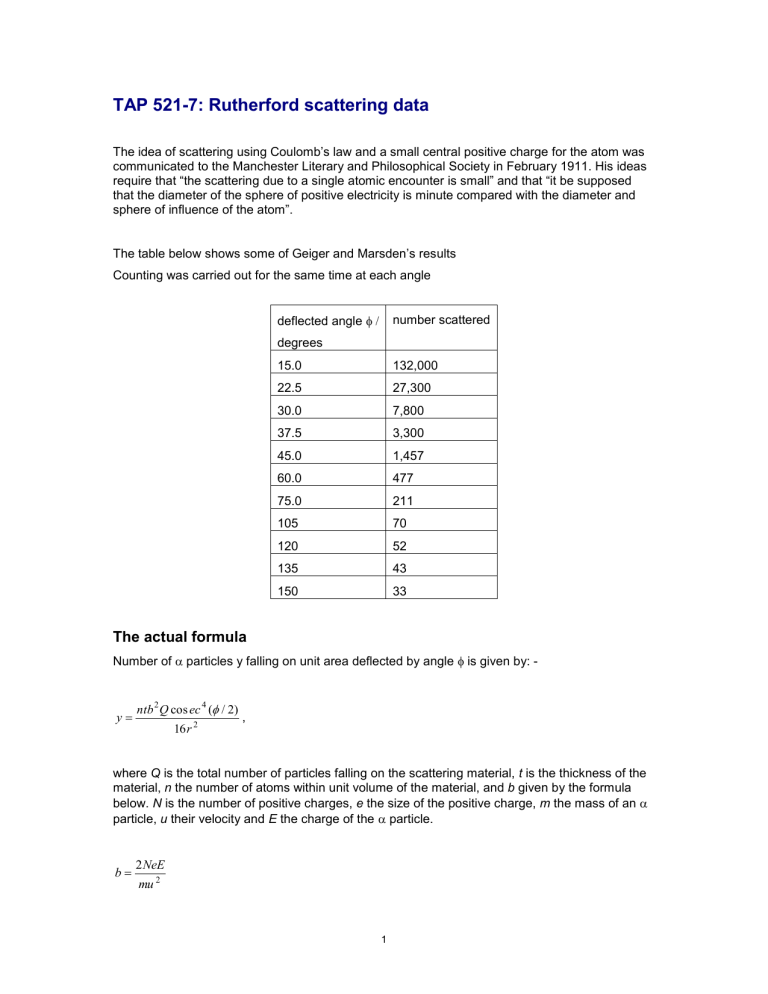
TAP 521-7: Rutherford scattering data
The idea of scattering using Coulomb’s law and a small central positive charge for the atom was communicated to the Manchester Literary and Philosophical Society in February 1911. His ideas require that “the scattering due to a single atomic encounter is small” and that “it be supposed that the diameter of the sphere of positive electricity is minute compared with the diameter and sphere of influence of the atom”.
The table below shows some of Geiger and Marsden’s results
Counting was carried out for the same time at each angle deflected angle
number scattered degrees
15.0
22.5
132,000
27,300
30.0
37.5
45.0
60.0
7,800
3,300
1,457
477
75.0
105
120
135
150
211
70
52
43
33
The actual formula
Number of
particles y falling on unit area deflected by angle
is given by: - y
ntb
2
Q cos ec
4
(
/ 2 )
,
16 r
2 where Q is the total number of particles falling on the scattering material, t is the thickness of the material, n the number of atoms within unit volume of the material, and b given by the formula below. N is the number of positive charges, e the size of the positive charge, m the mass of an
particle, u their velocity and E the charge of the
particle. b
2 NeE mu
2
1
One of Rutherford’s conclusions was that the number of scintillations per unit area of zinc sulphide screen is proportional to cos ec
4
(
/ 2 )
Maths note cosec (
1/sin (
What to do
Add extra columns to the table as needed to enable you to draw a graph to test Ruthe rford’s conclusion that the number of scintillations per unit area of zinc sulphide screen is proportional to cos ec
4
(
/ 2 )
As an extension you might like to plot number scattered against 1/
4
Write down you conclusions from the graph(s)
2
Practical advice
Some students might like to see Rutherford’s equation and try a test to see how the results come out. This activity is considered optional. Some websites with papers of the time are given below for interest
Alternative approaches
A spreadsheet could be used for this activity.
You should find:
To a reasonable degree y proportional to cos ec
4
(
/ 2 )
number scattered against 1/
4 is only proportional at small angles.
External references
This activity is based on “The Scattering of and
Particles By Matter and the Structure of the
Atom. By Professor E RUTHERFORD F.R.S., University of Manchester.“ from which the equation is quoted and the section in quotation marks at the top of the page.
An abstract of the paper is at: - http://dbhs.wvusd.k12.ca.us/webdocs/Chem-History/Rutherford-atom-abstract.html
see also:
Philosophical Magazine , Series 6, Volume 27 March 1914, p. 488 - 498 http://dbhs.wvusd.k12.ca.us/webdocs/Chem-History/Rutherford-1914.html
The paper can also be found in Foundations of Nuclear Physics, Beyer, Robert T (Ed), New York
1949 Dover Publications Inc. pp 111-130. The book also contains papers by Chadwick,
Lawrence, Cockcroft, Gamow and Yukawa amongst others.
Of interest might also be:
On a Diffuse Reflection of the
-Particles, Proc. Roy. Soc.
1909 A vol. 82, p. 495-500 By H.
GEIGER, Ph.D., John Harling Fellow, and E. MARSDEN, Hatfield Scholar, University of
Manchester http://dbhs.wvusd.k12.ca.us/webdocs/Chem-History/GM-1909.html
and
The Scattering of the
-Particles by Matter by H. GEIGER, Ph.D. Proceedings of the Royal
Society vol. A83, p. 492-504 http://dbhs.wvusd.k12.ca.us/webdocs/Chem-History/Geiger-1910.html
3
